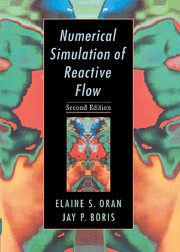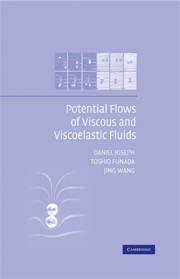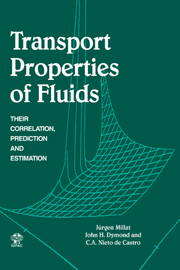Refine search
Actions for selected content:
5486 results in Thermal-fluids engineering
Contents
-
- Book:
- Ocean Engineering Mechanics
- Published online:
- 05 June 2012
- Print publication:
- 12 October 2009, pp vii-xvi
-
- Chapter
- Export citation
2 - Review of Hydromechanics
-
- Book:
- Ocean Engineering Mechanics
- Published online:
- 05 June 2012
- Print publication:
- 12 October 2009, pp 7-43
-
- Chapter
- Export citation
12 - Wave-Induced Motions of Compliant Structures
-
- Book:
- Ocean Engineering Mechanics
- Published online:
- 05 June 2012
- Print publication:
- 12 October 2009, pp 453-528
-
- Chapter
- Export citation
9 - Wave-Induced Forces and Moments on Fixed Bodies
-
- Book:
- Ocean Engineering Mechanics
- Published online:
- 05 June 2012
- Print publication:
- 12 October 2009, pp 273-349
-
- Chapter
- Export citation
3 - Linear Surface Waves
-
- Book:
- Ocean Engineering Mechanics
- Published online:
- 05 June 2012
- Print publication:
- 12 October 2009, pp 44-72
-
- Chapter
- Export citation
OCEAN ENGINEERING MECHANICS
-
- Book:
- Ocean Engineering Mechanics
- Published online:
- 05 June 2012
- Print publication:
- 12 October 2009, pp xxxix-xl
-
- Chapter
- Export citation
4 - Nonlinear Surface Waves
-
- Book:
- Ocean Engineering Mechanics
- Published online:
- 05 June 2012
- Print publication:
- 12 October 2009, pp 73-112
-
- Chapter
- Export citation
References
-
- Book:
- Ocean Engineering Mechanics
- Published online:
- 05 June 2012
- Print publication:
- 12 October 2009, pp 549-574
-
- Chapter
- Export citation
Preface
-
- Book:
- Ocean Engineering Mechanics
- Published online:
- 05 June 2012
- Print publication:
- 12 October 2009, pp xvii-xviii
-
- Chapter
- Export citation
8 - Coastal Engineering Considerations
-
- Book:
- Ocean Engineering Mechanics
- Published online:
- 05 June 2012
- Print publication:
- 12 October 2009, pp 258-272
-
- Chapter
- Export citation
Index
-
- Book:
- Ocean Engineering Mechanics
- Published online:
- 05 June 2012
- Print publication:
- 12 October 2009, pp 575-580
-
- Chapter
- Export citation
Appendices
-
- Book:
- Ocean Engineering Mechanics
- Published online:
- 05 June 2012
- Print publication:
- 12 October 2009, pp 529-548
-
- Chapter
- Export citation
10 - Introduction to Wave-Structure Interaction
-
- Book:
- Ocean Engineering Mechanics
- Published online:
- 05 June 2012
- Print publication:
- 12 October 2009, pp 350-375
-
- Chapter
- Export citation
7 - Waves in the Coastal Zone
-
- Book:
- Ocean Engineering Mechanics
- Published online:
- 05 June 2012
- Print publication:
- 12 October 2009, pp 224-257
-
- Chapter
- Export citation
Frontmatter
-
- Book:
- Ocean Engineering Mechanics
- Published online:
- 05 June 2012
- Print publication:
- 12 October 2009, pp i-vi
-
- Chapter
- Export citation
1 - Introduction
-
- Book:
- Ocean Engineering Mechanics
- Published online:
- 05 June 2012
- Print publication:
- 12 October 2009, pp 1-6
-
- Chapter
- Export citation
6 - Wave Modification and Transformation
-
- Book:
- Ocean Engineering Mechanics
- Published online:
- 05 June 2012
- Print publication:
- 12 October 2009, pp 161-223
-
- Chapter
- Export citation

Numerical Simulation of Reactive Flow
-
- Published online:
- 09 October 2009
- Print publication:
- 06 November 2000

Potential Flows of Viscous and Viscoelastic Liquids
-
- Published online:
- 09 October 2009
- Print publication:
- 17 December 2007

Transport Properties of Fluids
- Their Correlation, Prediction and Estimation
-
- Published online:
- 07 October 2009
- Print publication:
- 13 June 1996
